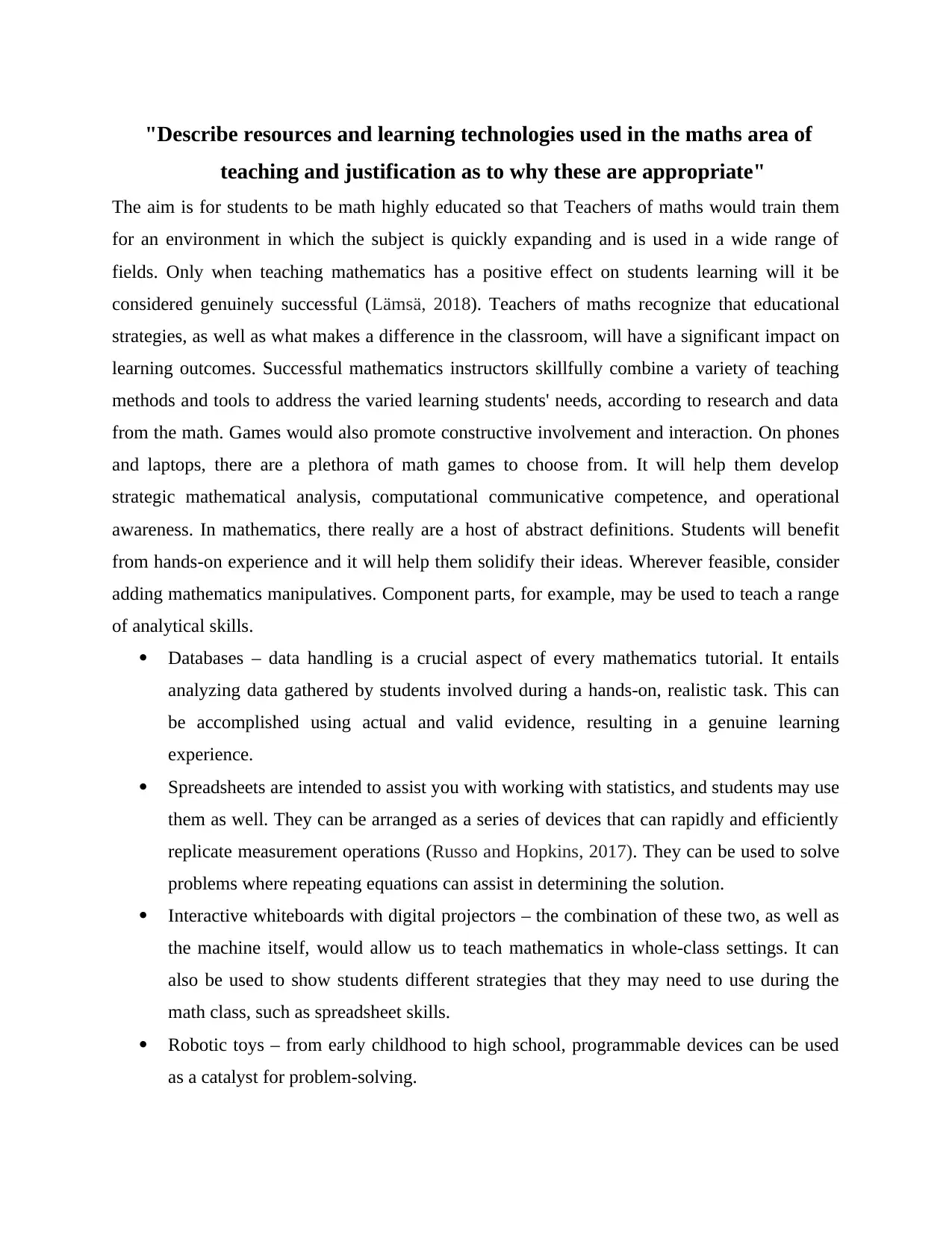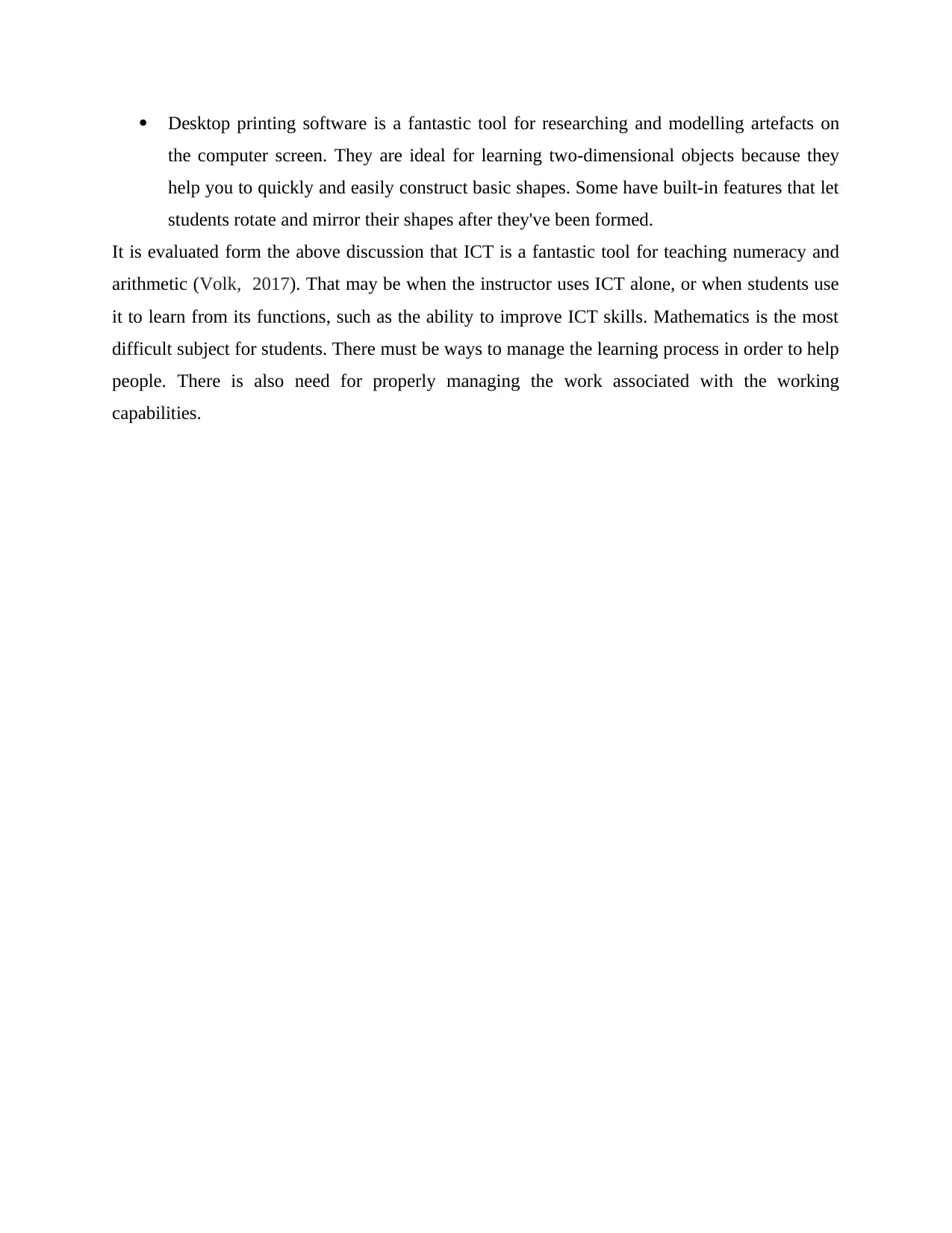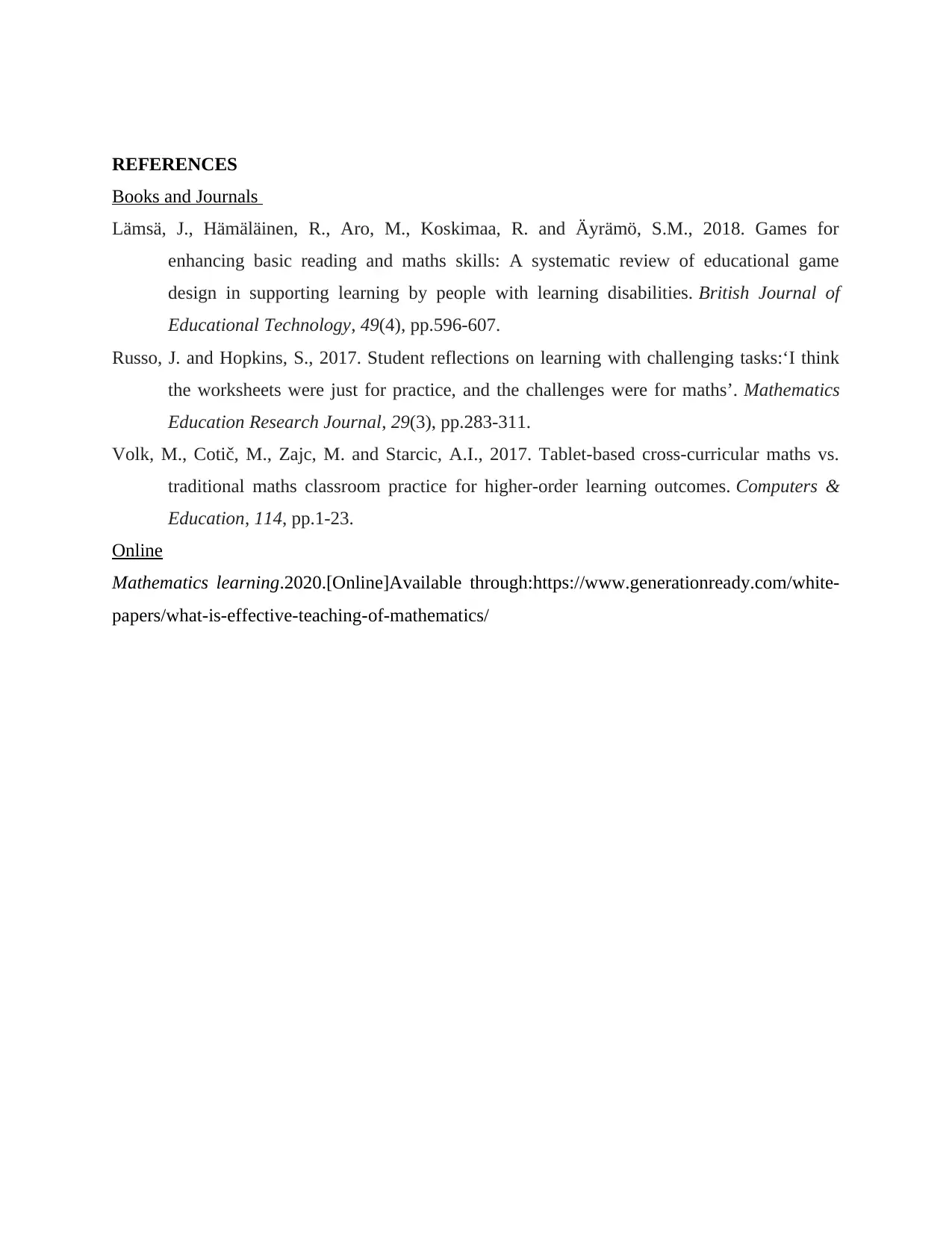Report on Resources and Technologies for Maths Teaching Methods
VerifiedAdded on 2022/12/01
|5
|734
|344
Report
AI Summary
This report explores various resources and learning technologies employed in mathematics teaching, emphasizing their significance in fostering effective learning outcomes. The report highlights the importance of teachers skillfully integrating diverse teaching methods and tools, including educational games, manipulatives, databases, spreadsheets, interactive whiteboards, and robotic toys, to address students' varied learning needs. The report provides a justification for the use of these resources, emphasizing their role in promoting constructive engagement, strategic mathematical analysis, and operational awareness. The report references various sources to support the arguments made. The report concludes by underscoring the crucial role of Information and Communication Technology (ICT) in mathematics instruction, whether used by the instructor or students, to enhance ICT skills and manage the learning process effectively. The aim is to provide a comprehensive overview of how these resources can be leveraged to improve the teaching and learning of mathematics.
1 out of 5











![[object Object]](/_next/static/media/star-bottom.7253800d.svg)